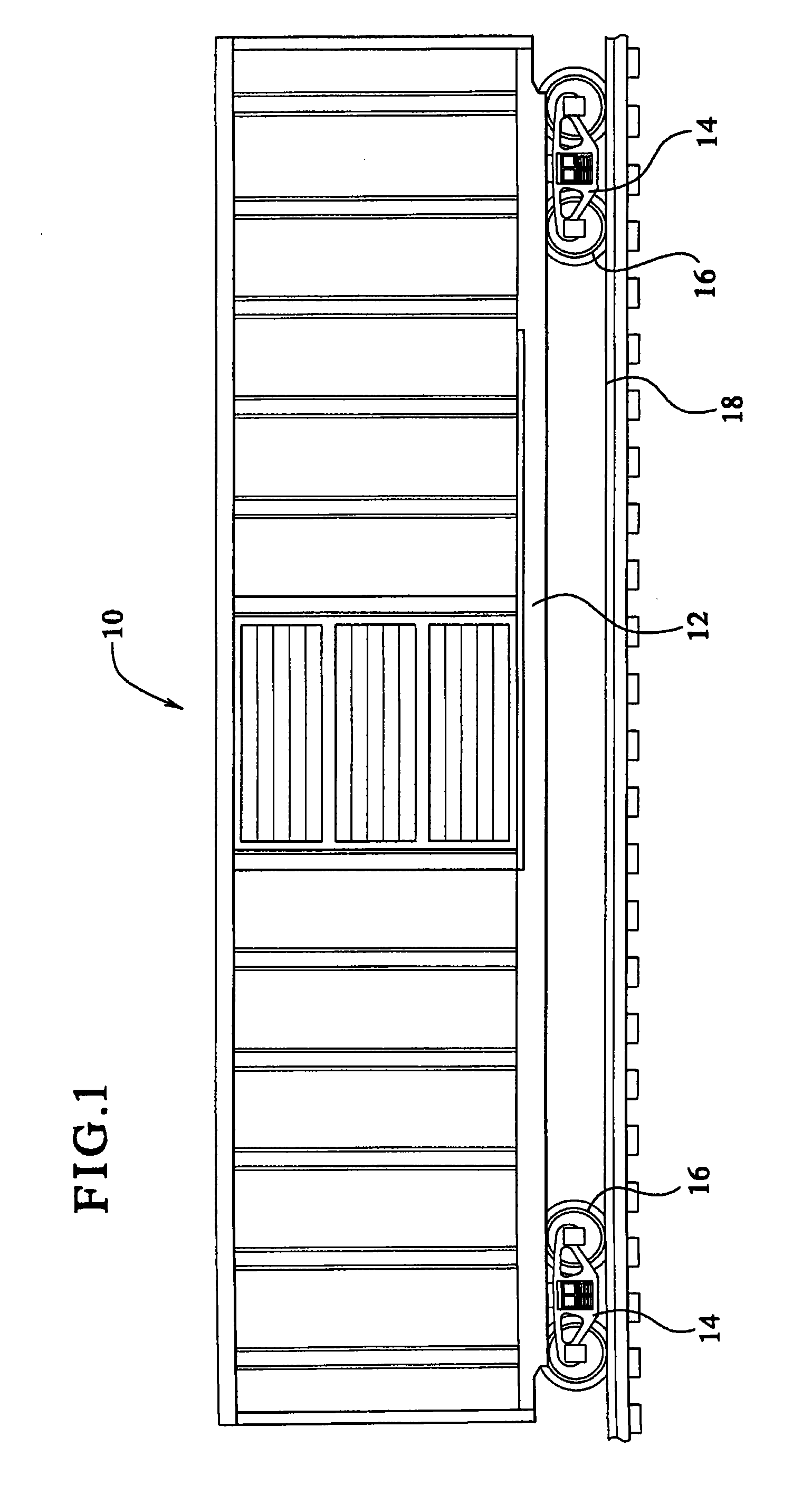Thousands of people are hurt or killed at railroad crossings each year.
However, many railroad crossings in rural areas do not have any warning systems.
Conventional freight railroad cars are not illuminated and are not equipped or constructed with reflective materials.
During night time hours, many accidents occur simply because the drivers of vehicles cannot see the dark freight railroad cars and do not know that freight railroad cars are running through the crossing.
This problem for vehicles (as well as for snowmobiles and ATV's) is so common that on Jan. 3, 2005, the United Sates Federal Railroad Administration issued final regulations mandating that reflective material be placed on all freight railroad cars within ten years or by 2015 at least according to a minimum schedule set forth in the regulations.
This is an extraordinarily large and expensive undertaking for the railroads because there are over 1.6 million freight railroad cars and locomotives in North America.
Equipping the large number of freight railroad cars in accordance with these regulations has been and continues to be an extremely slow process, in part because the railroads are equipping their freight cars by directly placing
adhesive backed reflective tape on portions of the freight railroad cars such as the frames and side walls of the freight railroad cars.
There are several problems with attaching such reflective tape directly to the freight railroad cars.
One problem is that the freight railroad cars must be taken out of service for a relatively significant amount of time during the attachment process.
Another problem is that the freight railroad cars are usually extremely dirty and must be cleaned before the
adhesive backed reflective tape is directly placed on the freight railroad cars for proper adherence.
Another problem is the freight railroad cars tend to be rusty and the adhesive backed tape does not adhere to
rust very well.
The cleaning can take several hours for each freight railroad car.
This cleaning is thus extremely
time consuming, inefficient and expensive.
This is a substantial man-hour cost.
These problems dramatically slow the entire process of equipping the 1.6 million freight railroad cars according to the regulations.
The problem with this is that the adhesive backed reflective tape is much more likely to not stick to, peel off or otherwise come off such dirty or rusty surfaces, and thus result in a freight railroad car without the necessary reflective material according to the regulations.
A further problem is that the adhesive backed reflective tape is preferably applied when the temperature is above 50 degrees Fahrenheit.
If the temperature is significantly below 40 degrees Fahrenheit, and particularly if the surface of the freight railroad car is below 40 degrees Fahrenheit, then the adhesive backed reflective tape may not readily stick to the surface of the freight railroad car.
Similarly, a further problem is that it is difficult to apply the reflective tape in
bad weather such as rain or
snow.
This also dramatically increases the time and cost of equipping freight railroad cars according to the regulations.
Another problem with directly applying reflective tape to the freight railroad cars is that many surfaces of the freight railroad cars are not flat because they have been dented or otherwise damaged.
This can further slow down the installation process and can cause the reflective tape to peel or otherwise come off more readily.
A further problem is that the adhesive backed reflective tape directly applied to the railroad is not protected and is subject to external forces which can cause damage to the reflective tape.
 Login to View More
Login to View More  Login to View More
Login to View More 


